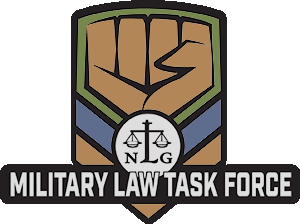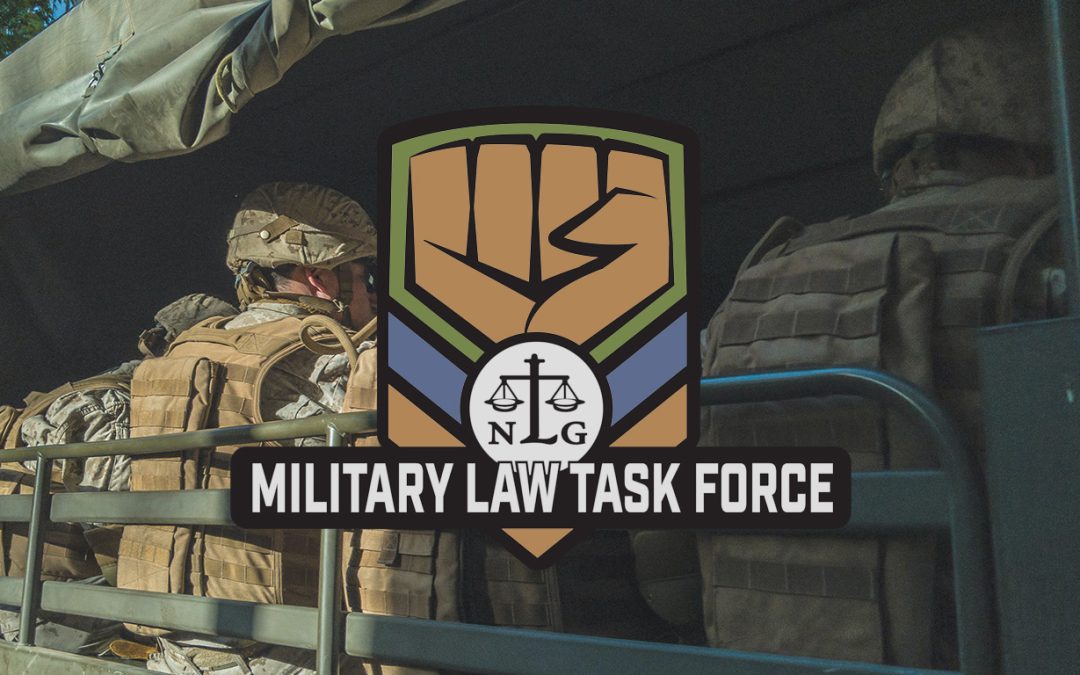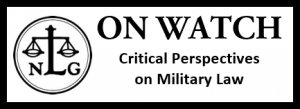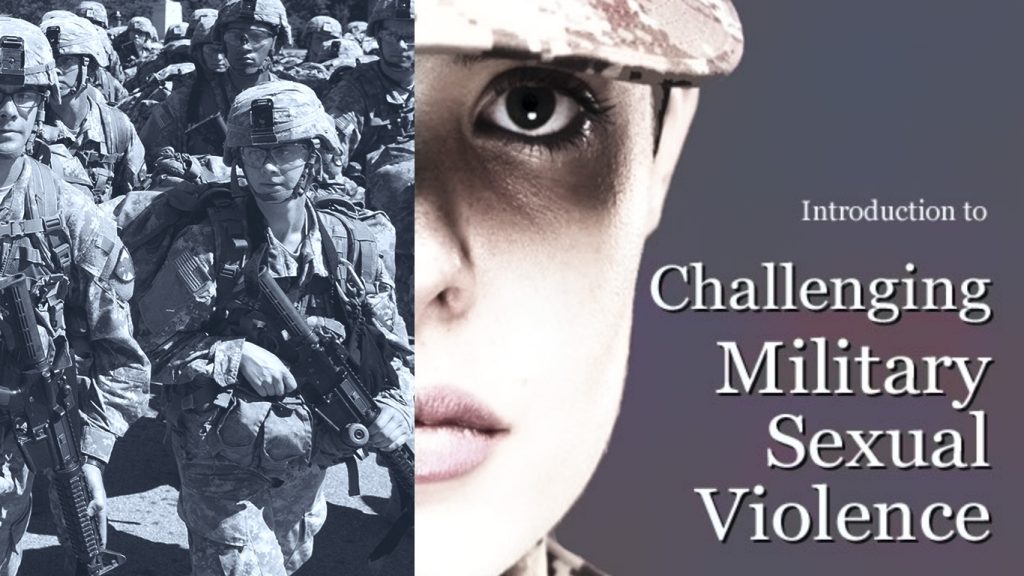BY DAWN BLANKEN AND JEFF LAKE
On January 30, 2020, the World Health Organization declared that the spread of the COVID-19 virus was a global pandemic. In response, the U.S. military has instituted a number of policies affecting its personnel around the world. This article will summarize some of the major policies enacted by the military. As could be expected, these policies are under continuous review and may change at any time. [See defense.gov/Explore/Spotlight/Coronavirus/]
Issuance from the Department of Defense has often been inconsistent with Pentagon press briefings, interviews by DoD officials with the media, and announcements from the White House, whether by Executive Order or Executive Tweet. Major announcements have been made hours or days before any published issuance, and on a few occasions announcements were not followed by issuance, but by updated announcements either by Defense Media or an involved command.
Most of the Defense Department memos have contained broad language delegating decision making to the involved commands, whether on issues of compliance with CDC guidelines, travel, training or personnel issues. What level of commander has authority is rarely articulated, and this has led to some confusion. Recently, the Commandant of the USMC, a four star general, directed the training of 400 marines at a remote field training, only to find the colonel in charge of the training subsequently sent everyone back to base. The Commandant invoked authority to waive CDC guidelines per a DoD memo. The colonel wanted an order from the Marine Corps.
Numerous commands have been given broad authority via DoD memos, but most commanders have been slow to generously interpret that authority. A now famous example
is the former Captain of the USS Teddy Roosevelt who refused to make exceptions to CDC guidelines absent a NAVADMIN only to be relieved of his command by the now former acting Secretary of the Navy.
TRAVEL
The most fluid policies enacted have to do with military travel. In its initial response in March, the military stopped movement of all DoD uniformed, civilian, and family members traveling to, from or through CDC Level 3 (COVID-19) designated locations for 60 days. Exemptions were available for “mission essential” travel, humanitarian reasons and extreme hardship. On May 22, 2020, the DoD relaxed these restrictions and adopted a more flexible policy. The policy memo can be found here.
Now, military members and civilian contractors and their families will be able to travel to areas where shelter-in-place orders have been lifted and COVID-19 cases have shown a 14-day downward trend. Additionally, a number of new exemptions have been added, including travel for medical treatment, troops on temporary duty who are scheduled to return home, and troops or civilians preparing to separate or retire.
The Navy in particular has had difficulty dealing with COVID-19, with 2,376 cases reported and one death as of late May. Recently, the Navy has released new guidance on travel and testing for sailors. According to the Navy Chief of Information, “The minimum actions to deploy a unit will consist of predeployment medical screening, a minimum of 14 days in a pre-deployment restriction of movement sequestered status, and adherence to preventative measures like handwashing and face coverings while underway. Pre-deployment screening will consist of an assessment of COVID-19 exposure history, a temperature check, a check for COVID-19 signs and symptoms, a review of any past COVID-19 testing, and a thorough evaluation of the member’s high risk factors. The daily screening will consist of a questionnaire and temperature checks.” The full guidance is here.
HEALTH
The military has issued several Force Health Protection Memos (FHP) as well as other policy guidance concerning healthcare related to COVID-19.
FHP5 contains updated best practices on evaluation, treatment and management of COVID-19 patients, patient movement, and transportation crew protections along with expanded language on moving COVID-19 positive patients and asymptomatic patients under investigation (PUI) due to required patients care or mission requirements. It is the first document that specifically directs treatment of COVID-19 patients in place and also contains exceptions language.
FHP 6 contains guidance on whom to test and when, how to use the test results, and guidance on when to return someone to duty. Examples from this guidance direct that: asymptomatic and mildly symptomatic members should not be tested, individuals who can recover at home should not be tested and a negative test result in an asymptomatic individual must not be used as clearance for duty.
FHP 6 includes an attachment that contains details on individual case management per the Military Health System at Health.mil and the CDC.
The Memo explains when to comply with FDA regulations for diagnostic testing and COVID-19
Emergency Use Authorization (EUA) and the exceptions to compliance. Broadly, testing must be FDA/EUA compliant when testing individuals, but is not required to inform public health decisionmaking to protect DoD component personnel and preserve mission execution. There have been numerous changes to recruiting and training policies military wide, including Guard and Reserve. The Army Reserve has implemented virtual monthly battle assemblies and virtual continuing education in addition to postponing or cancelling annual trainings.
The Navy Reserve issued NAVADMIN 099/20 stating: “the Department of Defense anticipates involuntary mobilization of RC forces for COVID-19 response” and it included reporting procedures for the Individual Ready Reserve.
FACE COVERINGS
FHP (Supplement 7) issued April 8, includes the following:
It requires cloth face coverings when a distance of six feet cannot be maintained, when practicable.
Masks shall extend above the nose, below the chin, fit snugly against the sides of the face, and be secured by ties or ear loops.
Masks shall be laundered regularly to maintain good hygiene.
Military Departments will issue guidance on uniform wear for service members. Pending guidance, coverings will be of neutral colors.
N95 respirators are discouraged due to supply constraints. Surgical masks are intended for patients and healthcare workers.
Gloves, gown and eye protection should be used primarily for patient care and transport. Between patient encounters, non-disposable eye protection must be disinfected.
Gloves and gowns must be changed at prescribed intervals.
Non-pharmaceutical interventions were detailed per the CDC recommendations.
WHO WAS AFFECTED:
All individuals on DoD property, installations, and facilities.
WHAT WAS AFFECTED:
Public areas and work centers.
WHAT AND WHO WAS EXEMPTED:
Individuals exempted by commanders, supervisors and contracting officers. Impracticality, health or other bases may be approved.
Exceptions should be in writing to the recipient and the next higher level of command or supervision.
Security checkpoints may request face masks be lowered for identification.
“Components will comply with applicable labor obligations to the extent such obligations do not conflict with the agency’s ability to conduct operations during this emergency.”
WORKPLACES:
FHP (Supplement 8) issued April 13, states the following:
This memo supplements DoD Instruction 6200.03, Public Health Emergency Management Within the DoD, March 28, 2019.
Effective Immediately, Components will restrict workplace access per CDC recommendations, to the fullest extent practicable, consistent with mission needs.
WHO WAS AFFECTED:
Individuals in DoD-controlled workplaces: Service members, civilian employees, and contractor personnel.
Personnel with symptoms–fever, cough, shortness of breath–should notify their supervisor and stay home.
Sick individuals should follow CDC recommendations: if-you-are-sick/steps-when-sick.
Sick personnel should not return to work until meeting CDC criteria on: dispositionin-home-patients, and have consulted with healthcare providers and local health departments.
Asymptomatic personnel with potential exposure should notify their supervisor. Asymptomatic personnel should self-isolate for 14 days.
The asymptomatic person’s supervisor must consult with the Component medical authority and determine when the person no longer presents a threat to the work force.
DoD service members and civilian employees, in localities that generally require the public to stay home, are to report to work only as directed by a commander or supervisor. This includes “key and essential personnel whose presence is determined to be critical to Component operations or who provide essential on-site services.”
WHAT WAS AFFECTED:
DoD-controlled workplaces.
Minimize close contact; maintain 6 feet of separation if possible.
WHAT AND WHO WAS EXEMPTED:
Asymptomatic personnel who are mission essential may be exempted provided they remain asymptomatic and comply with the following practices for 14 days after exposure: daily pre- screening with temperature checks, self-monitoring with employer supervision, wearing a face covering, not sharing objects used near the face, 6 feet of distancing, when possible, daily disinfecting of their workspace.
If symptoms present, personnel are to be sent home immediately.
The exception authority is the first General/Flag Officer or member of the Senior Executive Service in the chain of command/supervision.
The memo includes 12 FAQ’s as an attachment.
NATIONAL GUARD INFECTIONS
Finally, there are reports the members of the National Guard who have been called to assist local police regarding demonstrations protesting the murder of George Floyd have tested positive for COVID-19. According to McClatchy News, the spokeswoman for the D.C. National Guard confirmed the positive tests but would not specify exact numbers. A report from the Lincoln Star Journal confirmed that two members of the Nebraska National Guard have tested positive. A person interviewed by the paper stated that Guard members were “crammed into buses” and shared gear during their deployment. This will obviously be an ongoing problem both for the Guard and for demonstrators if the Guard continues to be used to supplement local police around the country.
CONCLUSION
Again, the military’s response to COVID-19 continues to evolve as the virus spreads and conditions within the country and around the world change. Look for continuing analysis of significant changes in future issues of On Watch and on the MLTF website – www.nlgmltf.org.
Dawn Blanken has been a counselor with the GI Rights Hotline since 2003, beginning her work with the Humboldt County California node and continues to work from southern Colorado as a counselor, Board member and MLTF member. Dawn worked for twenty years as a union journeyman tradesman in commercial printing in San Francisco.
Jeff Lake is the chair of the Military Law Task Force. He is in private practice in San Jose, California.



